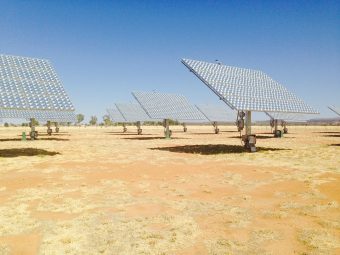
When the 720 km power cable from Norway to the UK made landfall two years ago it was hailed as the longest in the world. Now a Singaporean renewable energy company has plans for an undersea power line five times longer.
Sun Cable plans to generate electricity using solar power in Australia’s Northern Territory and transmit it to Singapore along a 3,800 km subsea cable. As well as being the longest on the planet, the cable would turn Australia into a major green energy exporter.
Although the Norweigan electricity delivered to the UK will come from hydro-electric generation, the Australian project would take the export of sustainable energy to a new level. In much of the world, renewable energy is generated for local consumption.
The company wants to build the world’s largest solar farm, covering 15,000 hectares. The 10 gigawatt installation will be backed up by battery storage to provide 24-hour supply to the city of Darwin as well as providing one-fifth of Singapore’s energy needs.
Green hydrogen
In the Pilbara region of Western Australia an even larger green energy project is underway. The Asian Renewable Energy Hub (AREH) plans to use wind combined with solar to generate up to 15 gigawatts of electricity from what the consortium of energy leaders say will be the world’s biggest wind/solar hybrid site.
Both projects are still at the planning stage and the AREH team are working with the indigenous Nyangumarta people on whose land the 6,500 square kilometre project will be built.
AREH plans to use one-fifth of its output to supply local needs, including serving the tourist town of Broome, with the remainder devoted to a hydrogen manufacturing hub.
The aim is to use the hydrogen to power local mineral industries, helping Australia move away from being an exporter of raw materials to a manufacturer of finished product by, for example, replacing coke in steel blast furnaces.
Reducing CO2 emissions
Australia is currently the world’s biggest exporter of coking coal and iron ore, the second largest exporter of liquified natural gas (LNG) and has the world’s largest economically recoverable reserves of gold.
The nation was placed at number 43 in the World Economic Forum’s 2019 Energy Transition Index, largely due to a low score on environmental sustainability because of its reliance on coal for electricity generation.
The Australian government has argued that transitioning to greener energy sources will raise consumer bills. The Forum’s report highlights the need to ensure equitable distribution of the costs of energy transition to avoid placing lower-income citizens in fuel poverty.
By greening its industries and becoming a major exporter of renewable energy, Australia would be able to reduce its carbon emissions which, including its coal, oil and gas exports, now account for 5% of the global total. This is in part due to an increase in LNG exports, which rose by 22% last year.
Author: Douglas Broom
Source: WEF

